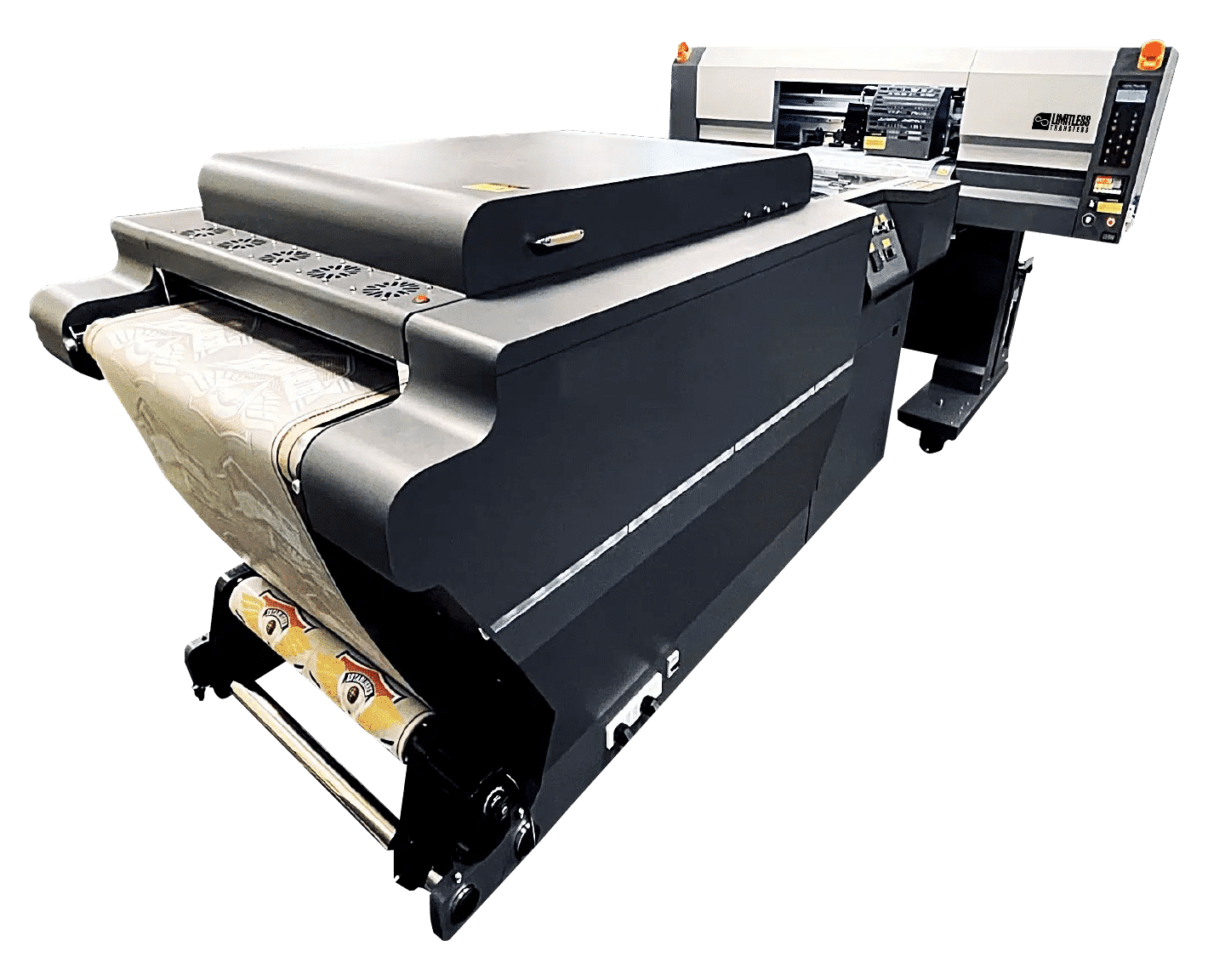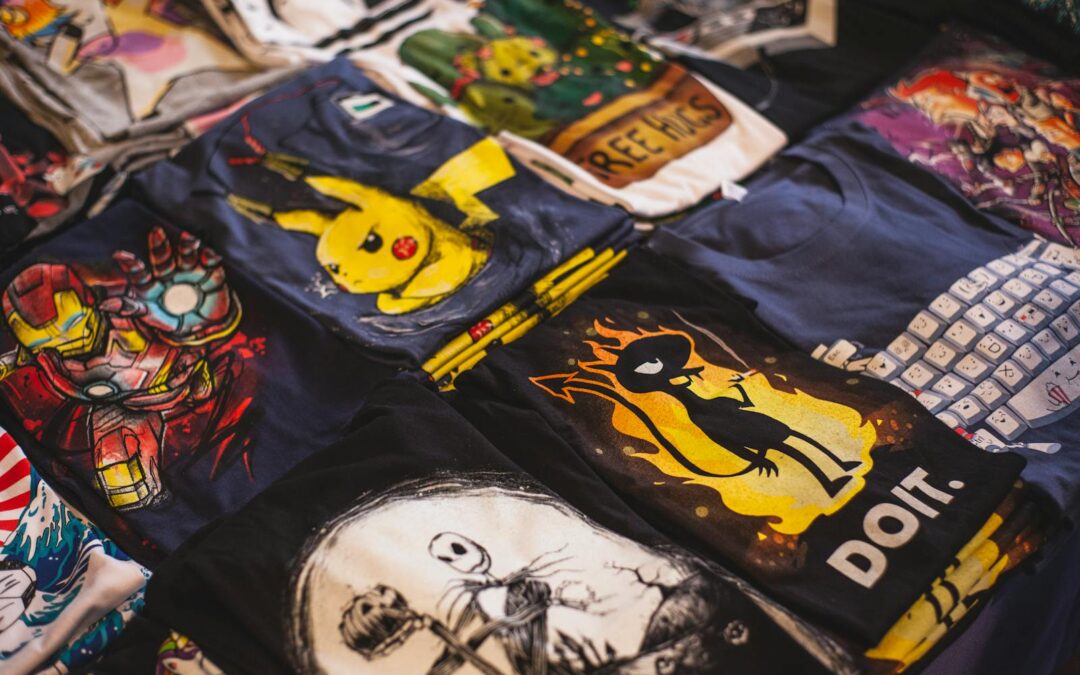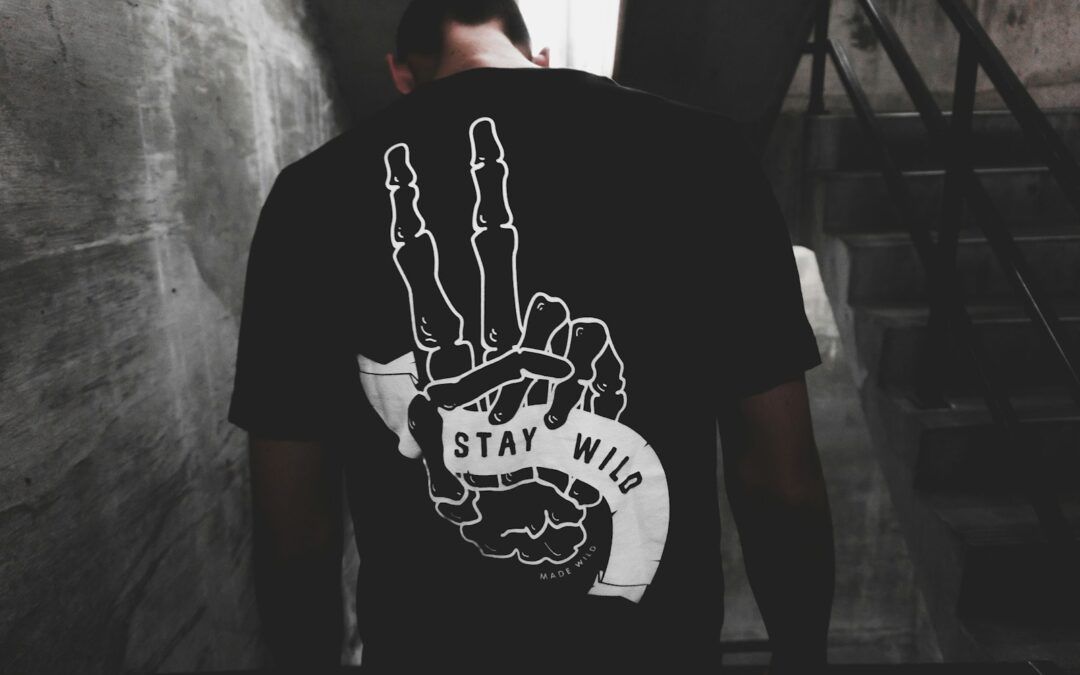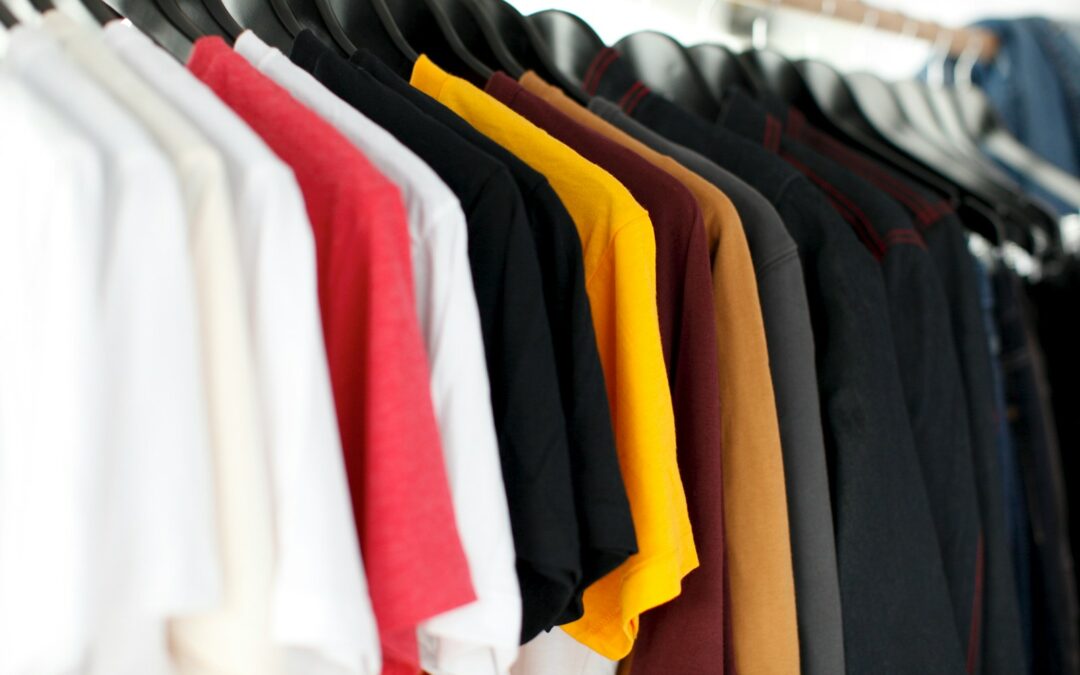Printing technology has come a long way over the years, with new methods and techniques constantly being developed. One of the biggest advancements in recent times has been the introduction of direct to film (DTF) transfer printing. DTF printers have become increasingly popular among screen print shops in recent years, largely due to the benefits they offer. In this post, we’ll compare two of the most commonly used printing methods, screen printing, and DTF printing, weighing up the pros and cons of each.

The Screen Printing Process Step by Step
Screen printing, also referred to as silk screen printing, is an ancient craft dating back centuries, offering a high-fidelity method to imprint designs onto various substrates including fabrics, paper, and even wood. In screen printing, the process starts with the creation of stencils, typically fashioned from transparent acetate film. Through digital printing, the designs are transferred onto the film and cut out.
The mesh screen with a metal or wooden frame, suited for the design’s complexity and fabric texture, is then coated with a light-reactive emulsion that, when exposed to bright light along with the acetate film, hardens the emulsion except where the design shields it. For designs with multiple colors, separate screens are prepared for each ink layer.
After exposure, the unhardened emulsion is washed off, leaving the design imprinted on the screen. The mesh screen, once dried and touched up, is ready for use. Onto a printing press, typically an automatic rotary carousel for multiple colors, the item is laid flat, and ink is squeegeed through the screen’s openings to transfer the design onto the product. Each item is screen printed in succession, and after the run, screens are cleansed for reuse. The final step involves drying the printed items, curing the ink for a durable finish, after which they are checked and cleaned, ready for distribution.

Does Screen Printing Ink Wash Out?
Screen printing is a popular technique among artists and designers to create high-quality prints in a wide range of applications. Now that you know screen printing methods involve the use of a screen printer to transfer ink onto the desired surface through a stencil, you may be wondering if the ink washes out.
Screen printing ink is formulated to resist fading and running, making it highly durable. However, just like any other ink, screen printing ink may wash out if not properly cured or washed in an appropriate manner. Therefore, it is essential to use the right screen printing press and adhere to specific washing guidelines to ensure the longevity of your printed designs.

Screen Printing Cost Factors
The cost implications of screen printing are multifaceted and hinge on several key factors. To start screen printing, a unique screen must be prepared, aligned on the printing board, and utilized in sequence for each individual color in the intended design; this factor ramps up screen printing equipment and labor costs accordingly. Moreover, the complexity and size of the print can also affect the cost. For example, larger or more intricate prints can necessitate additional layers of ink or finer screens, further elevating expenses.

The Materials Used to Screen Print will Impact the Cost
Additionally, the type of material or substrate chosen can impact the price, as some materials may require specialized inks or treatment prior to printing to ensure quality and durability. Volume, too, plays a critical role – larger quantities typically drive down the unit cost due to economies of scale.
Conversely, for smaller orders, the fixed setup costs become a significant portion of the overall price, making them less economical on a per-unit basis. Lastly, the expertise of the printer and the geographic location of the production also factor into the cost; specialized skill sets and high-cost-of-living areas are likely to command a premium.

Direct to Film Printing
Direct to Film (DTF) printing emerges as a revolutionary technique that enhances the versatility and efficiency of the print production process. This innovative method involves digitally scanning a design and then printing it directly onto a specialized film. This film is then coated with specialized DTF inks and powder – preparing it to be transferred onto the final material.
Using a heat press, the design is permanently applied to a variety of substrates, ranging from fabrics to rigid materials. What sets DTF apart is its capacity to reproduce designs with high vibrancy and impressive resistance to wear, enduring through repeated washing and usage.

DTF Eliminates the Need for Screen Preparation & Color Separation
Fundamentally distinct from screen printing, DTF eliminates the need for screen preparation and color separation, which can considerably reduce the time from design conception to final product.
Furthermore, the technology enables the seamless printing of detailed multicolor designs without the risk of human error during the layering process. DTF’s adaptability shines when considering its capability to print with precision on a multitude of products, making it a go-to for small or large order customizations or one-offs where the detailed setup of screen printing isn’t practical.
While not yet as ubiquitous as screen printing, DTF printing stands out for its swift production turnaround and the fine quality of its prints, marking the next step in printing technology evolution.

Direct to Film Printing Cost
Direct to film (DTF) printing, while presenting numerous advantages in versatility and efficiency, comes with its own set of cost considerations. The initial investment in DTF technology can be significant as it requires specialized equipment, including printers, films, and heat presses, which may not be readily available in a typical print shop.
The specialized films used in DTF are also a recurring cost; they are more expensive than the screens and emulsions used in screen printing. Additionally, the inks utilized in DTF printing are specific to the process and can be costly. These inks are formulated to adhere well to the film and subsequently transfer cleanly to a variety of substrates.
Maintenance and operational costs should also be considered – the advanced DTF printers need regular servicing to ensure they operate at optimal efficiency, which can introduce further costs. However, unlike screen printing, DTF provides an economical solution for smaller batch orders and intricate multicolor designs that would be cost-prohibitive to produce with traditional screen printing due to the latter’s substantial setup requirements.
The ability to print detailed designs without the manual labor of screen preparation allows businesses to offer custom prints with minimal increase in unit cost, no matter the order size. This can result in an overall lower cost per item for small to medium runs, making DTF printing a cost-effective choice for many modern printing applications.

Pros and Cons of Screen Printing vs. DTF Printing
When comparing screen printing with direct to film printing, it’s evident that each method has its distinct advantages. Screen printing, a well-established practice, boasts rich and vivid colors ideal for bulk orders. However, the initial setup cost can be prohibitive for smaller businesses, and the process can be time-consuming with detailed designs.
In contrast, DTF printing comes out as the more versatile and economical choice for various designs and lower volume orders. It provides a broad color spectrum and requires minimal setup, offering vibrant enough prints for most needs. Despite screen printing’s historical reliability, DTF’s ability to cater to a broader range of business sizes and design complexities has established it as the superior choice for many modern ventures. If adaptability and ease of entry into the market are key factors for a business, DTF printing is the clear choice.

Tips for Choosing the Right Print Method
When considering which printing method to use, reflect deeply on the design’s complexity, material type, and intended application of the finished product. For instance, a design that requires a soft-hand feel may benefit from the thin ink deposit of DTF printing, whereas a design that demands a raised texture may necessitate the heavier layers of screen printing. Moreover, the substrate material—whether it’s a cotton t-shirt, a polyester blend, or an unconventional fabric like denim—will influence the choice, as each printing method interacts differently with varied materials.

Conclusion
Both screen printing and DTF transfer printing have their pros and cons. By selecting the correct process, manufacturers can produce high-quality prints in small or large-batch orders. There’s no one-size-fits-all determination, but each has a particular market that it caters to. Here lies the advantage of knowing multiple processes and techniques when it comes to printing. When you are looking to select the right printing method, it is critical to reflect on the complexity of the design, the finished product’s intended application, and the type of material used. Consider each decision point and the advice shared in this post before determining which process is suitable for your printing needs.




